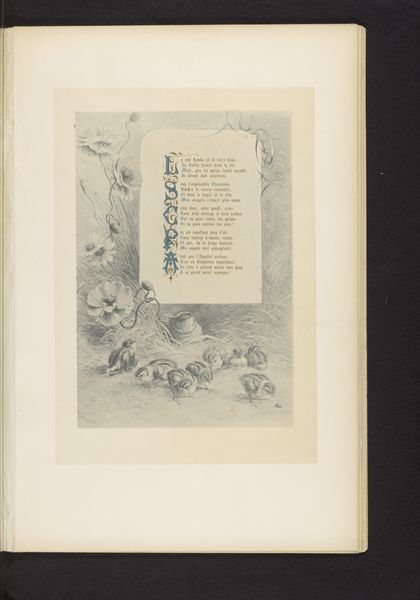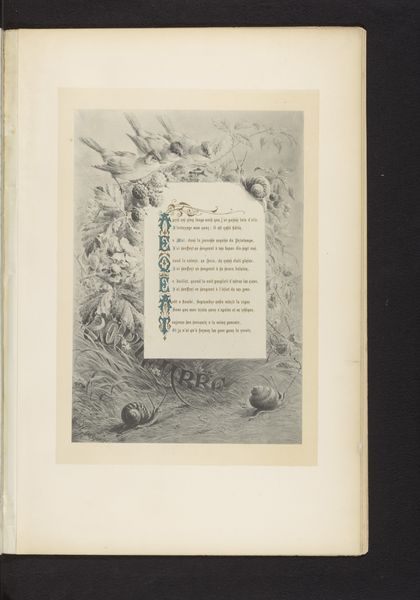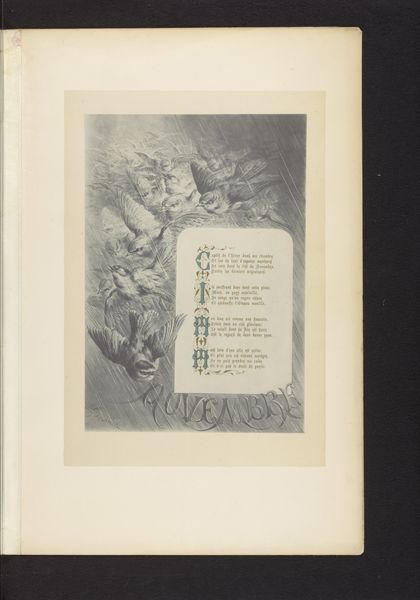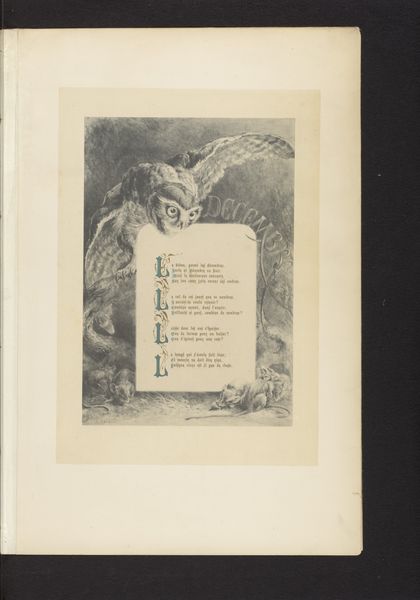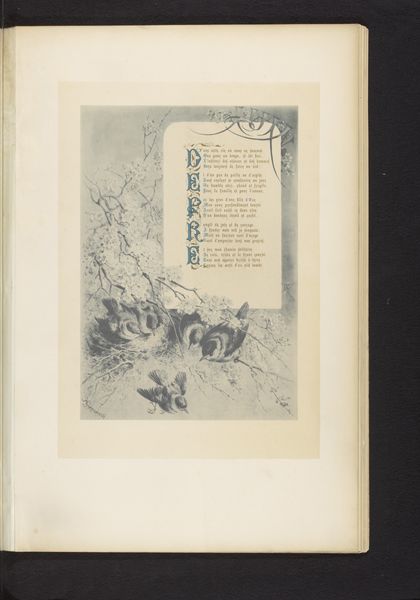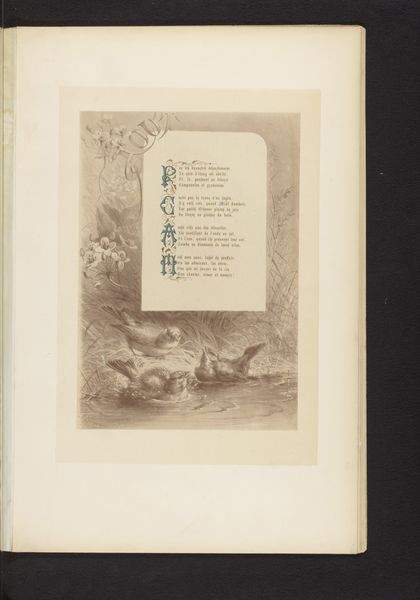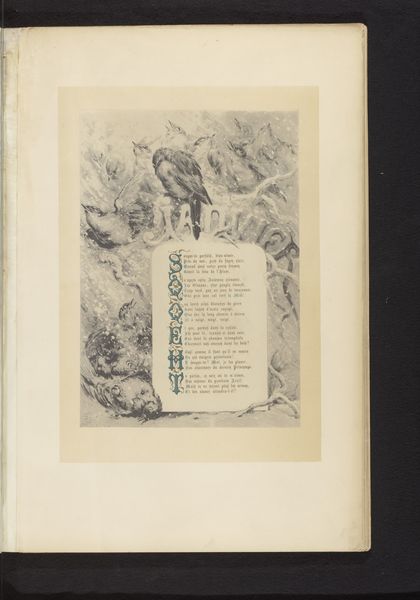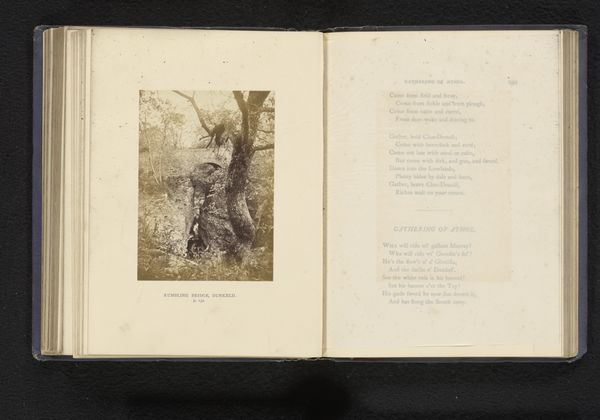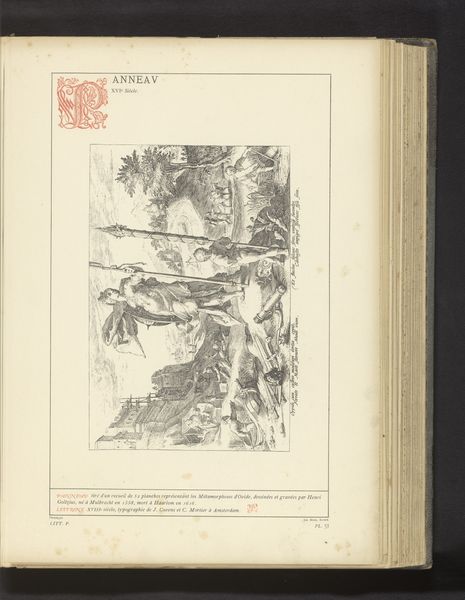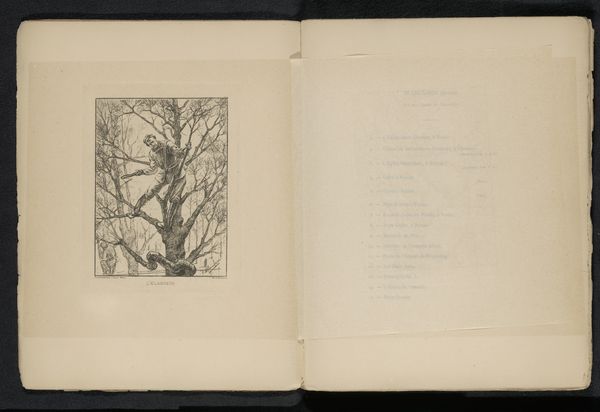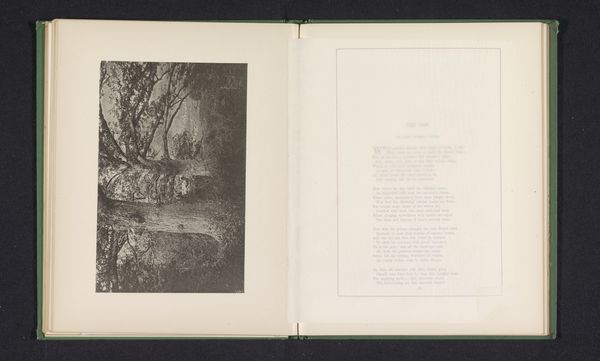
Reproductie van een prent van insecten en struikgewas, met het gedicht Mai van François Coppée, door Hector Giacomelli before 1876
0:00
0:00
drawing, print, etching, paper
#
drawing
#
aged paper
#
homemade paper
#
paper non-digital material
#
paperlike
# print
#
etching
#
sketch book
#
hand drawn type
#
landscape
#
personal journal design
#
paper
#
personal sketchbook
#
thick font
#
symbolism
#
historical font
Dimensions: height 315 mm, width 221 mm
Copyright: Rijks Museum: Open Domain
Editor: This is a reproduction of a print created before 1876 by Hector Giacomelli, after a drawing by Paul Dalloz, featuring a poem by François Coppée, all rendered with etching and other printmaking techniques on paper. I’m immediately struck by how much it resembles something from a personal sketchbook or journal, blending nature with the written word. How do you read this piece? Curator: Well, looking at it from a materialist perspective, I am interested in the way this print blurs the lines between art, craft, and industrial production. Consider the process. This isn’t just a landscape drawing; it's an etching, a print, which suggests a reproductive process intended for wider consumption. We have the handmade quality of a drawing and lettering married to techniques capable of creating copies. What does this suggest about art's role in society? Was it intended as accessible, artisanal product for the rising middle class, a luxury good? Editor: That’s an interesting point. I hadn't considered the implications of it being a print versus an original drawing. The material and reproduction techniques are almost contradictory. Does the combination elevate the perceived value or diminish the status due to its replicability? Curator: Exactly. Think about the role of paper itself. Was it handmade paper versus industrially produced? That impacts how we see this artwork and its original context of production, distribution, and use. Even the inclusion of a poem is relevant. We’re seeing the artform becoming integrated with literary culture, a commodity to be read and beheld. Do you think the etching flattens the experience? Editor: I do not think so. In fact, now I see how the materials and production techniques add a deeper layer of meaning that I hadn’t initially appreciated. Looking at it through a materialist lens makes it more engaging! Curator: Absolutely. This intersection is where art truly gets fascinating, right?
Comments
No comments
Be the first to comment and join the conversation on the ultimate creative platform.

